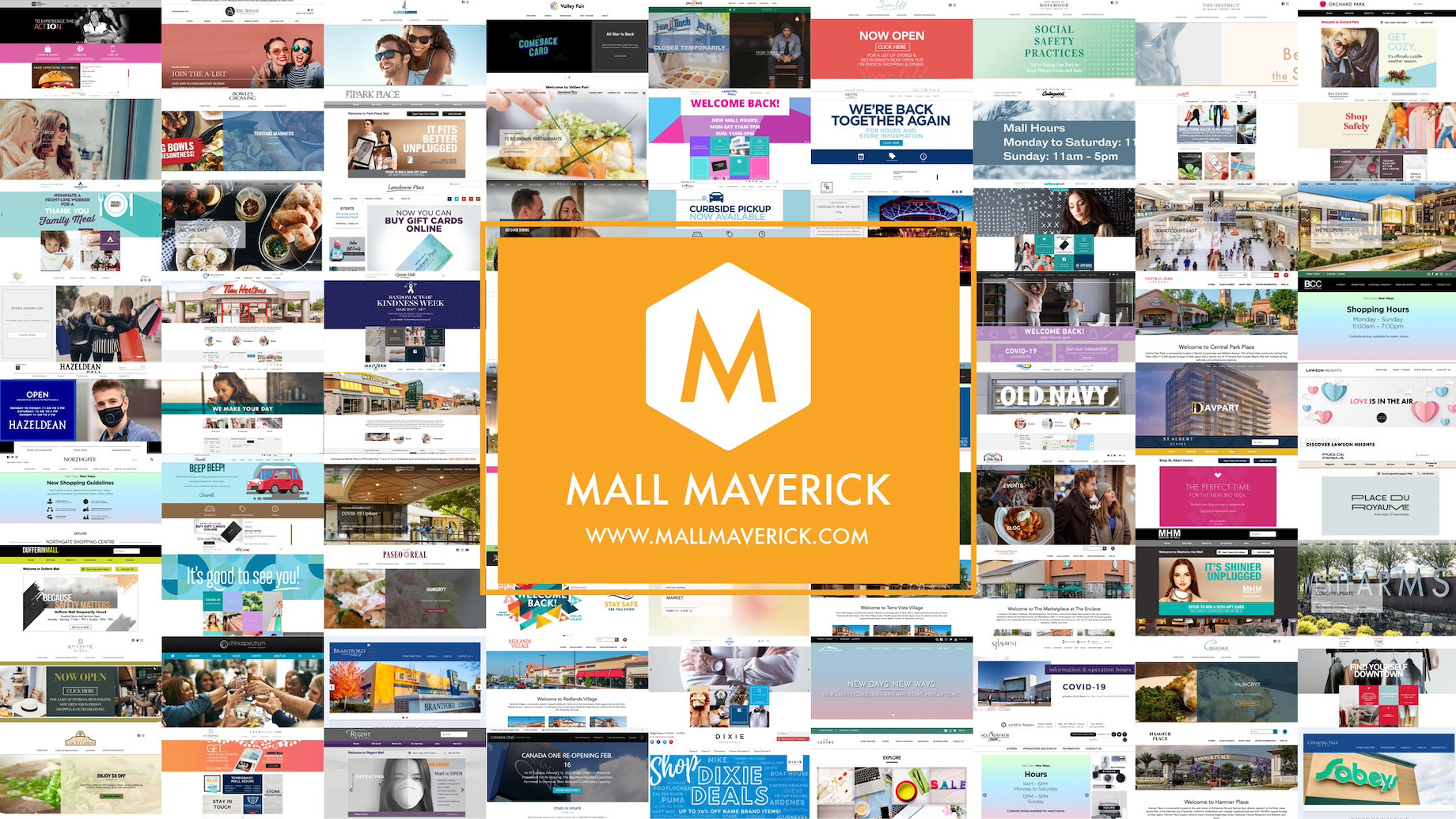There are some exciting changes we are observing in the retail and shopping centers space. Experiential retail is reshaping shopping malls into destinations that offer much more than traditional shopping. Furthermore, research has shown the Gen Z shopper has helped play a leading role in the revival of physical stores, highlighting the draw of gathering, shopping and dining with friends in person. These insights are promising for industry professionals today. Shopping malls’ relevancy is growing as they adopt tenant mixes that complement their communities. In this new evolution, getting back to basics for shopping center marketers is more important than ever to be successful.
In today’s marketplace, generating traffic and a discoverability to your audience no longer begins in person. It begins online for your shopping center.
It is a shopping center marketing professional’s responsibility to establish and maintain an online presence that resonates with their shoppers to drive foot traffic to the center. Benefits of a strong online presence also include attracting better tenants to fit your community at the best possible leasing rates. It can influence the financial performance of a property and its reputation. It is an essential part of property management today for all types and sizes of retail centers.
Establishing and maintaining an online presence is a responsibility that comes with inherent challenges. For shopping center marketers, these challenges can be constant and recurring, so how you manage the basics can make the difference between success and failure, time well spent or time wasted.
First, every retail and shopping center needs a website. This is the best and most efficient platform to build your audience connection and to improve discoverability for shoppers who start their journey online. Second, there must be a content strategy that includes consistent updates and insights. Doing these two things well leads to important success and growing value for your property.

Your Shopping Center’s Online Presence
In today’s dynamic retail landscape, a fast, accessible and user-friendly website is table stakes to stay relevant and reach your desired audiences. This applies to every type of retail center, big and small. To get a sense of the sheer power of being online, consider that in a Google/Ipsos poll conducted in February 2019, 83% of U.S. shoppers who had visited a store in the past week said they had used online search before going into the store. For retailers, consumers and industry professionals to take your shopping center or retail center seriously, you need a digital presence. This is where you get discovered and create your first impression.
“Every physical center has a digital representation. A simple community website with proper CMS enablement allows physical property teams to own, nurture and drive digital connection to the customer. It is a key differentiator for retail centers that are utilizing this channel to its full capabilities. This will lead to driving revenue and long-term value of your retail property as its digital wealth grows.”
— Lee Jackson, senior vice president of JLL Digital Solutions
Creating a connected online presence does not have to be complicated if you are using the right tool. Content management system, or CMS, Mall Maverick is built specifically for the shopping center industry and ensures that establishing your presence online can be done effectively.
A comprehensive website is crucial not only for reaching shoppers but also for attracting new retail tenants and potential partners. In the digital age, a well-designed and informative website serves as the first point of contact for many businesses looking to establish a presence in a shopping center. It provides a platform to showcase the center’s unique selling points, demographics, foot traffic data and available spaces, thereby enabling potential tenants and partners to make informed decisions. A comprehensive website not only conveys the image and branding of the shopping center but also serves as a valuable marketing tool, offering insight into the surrounding community, amenities and any upcoming events or promotions. It’s an essential component in establishing credibility and trust, as well as fostering a sense of transparency and accessibility.
It is important for shopping centers to provide retail tenant applicants with online forms, which they can use to share their information and inquire about leasing units. A well-designed website can help generate even more potential tenants. In this era of increased specialty leasing and pop-up stores, the competition for this type of tenant is high. By highlighting your mall’s strengths and unique selling points, you can increase the number of quality retail tenants and help ensure the long-term success of your property.
“The digital application forms we use on our shopping center websites for Pop Up and Grow and Leasing have helped to elevate our awareness of opportunities, streamline our efforts and centralize all of our leasing requests for both temporary and permanent retailers. Managing all applications in one place saves us valuable time and keeps us organized and focused on property profitability.”
— Rocky Viniard, then-vice president of marketing for Madison Marquette, a client of Mall Maverick
Content Is Still King
Now that your audience can find your retail or shopping center, you have so few seconds to make a first impression. Before we even consider content, your audience has to get to it. It is critical that your shopping center website loads fast. According to Kissmetrics, an incredible 47% of users expect a maximum of two seconds loading time for an average website. It is widely known that if your website takes over five seconds to load, you are losing your audience. This especially applies on mobile devices where the majority of website views take place. Once it loads, it takes 2.6 seconds for a user’s eyes to fixate on an area, according to Sirjana Dahal’s 2011 Missouri S&T master’s thesis, Eyes Don’t Lie: Understanding Users’ First Impressions on Website Design Using Eye Tracking. The pressure is on. This critical step is commonly missed by image-rich designs that never get to make their impression. You need to have confidence that your content will be seen in its best form. A CMS like Mall Maverick that was built for shopping center content is optimized for speed on mobile and desktop.

Creating and managing content for your retail or shopping center does not have to be a complex task. The primary goal of content management is to keep all information current, relevant and engaging. The content categories that most browsers will be looking for on your shopping center website are store information, jobs, promotions and events. At one period, a shopping center marketer was alone in their efforts to manage this content. Some shopping center portfolios lack a marketing person to take on these responsibilities or they only have one marketing manager doing it all. It feels like a tall task. So how can a retail or shopping center ensure these are updated consistently and accurately? Use a CMS built for shopping center portfolio management.
What sets apart industry CMSs like Mall Maverick is that they have a retailer login feature to allow your tenants to update their information and post promotions and jobs. Your website is now generating content directly from the source. Even better are content services features that update store information and store promotions automatically to your website every day across all locations. Content services leverage existing retail relationships at the corporate level to ensure retailers’ promotions and jobs get posted to your shopping center website. How effective are content services for attracting shoppers and engaging them? Very. A Mall Maverick client with over 10 shopping centers in its portfolio had dramatic results:
A 70% (80,900) increase in page views and 75% (62,800) increase in visitors across the client’s portfolio with content management services at Mall Maverick
It truly validates that content is king for your website. Furthermore, regularly updating your website with fresh content also signals to search engines like Google that your website is active and relevant, which will help improve your search engine rankings. It is a win-win for discovery and engagement.
Shopping Center Marketing Basics Do Make a Difference
Getting back to basics is important in a competitive world for shopping center marketers and owners. Making sure you are doing the basics right will give you confidence that you are reaching your audience and making an impact on your market value. What to learn more? Mall Maverick was made to ensure you do online marketing basics better than your competition. This cannot be done with other CMS solutions or teams. Let the expertise and guidance of Mall Maverick’s team ensure you are getting discovered. Contact Mall Maverick today here.
